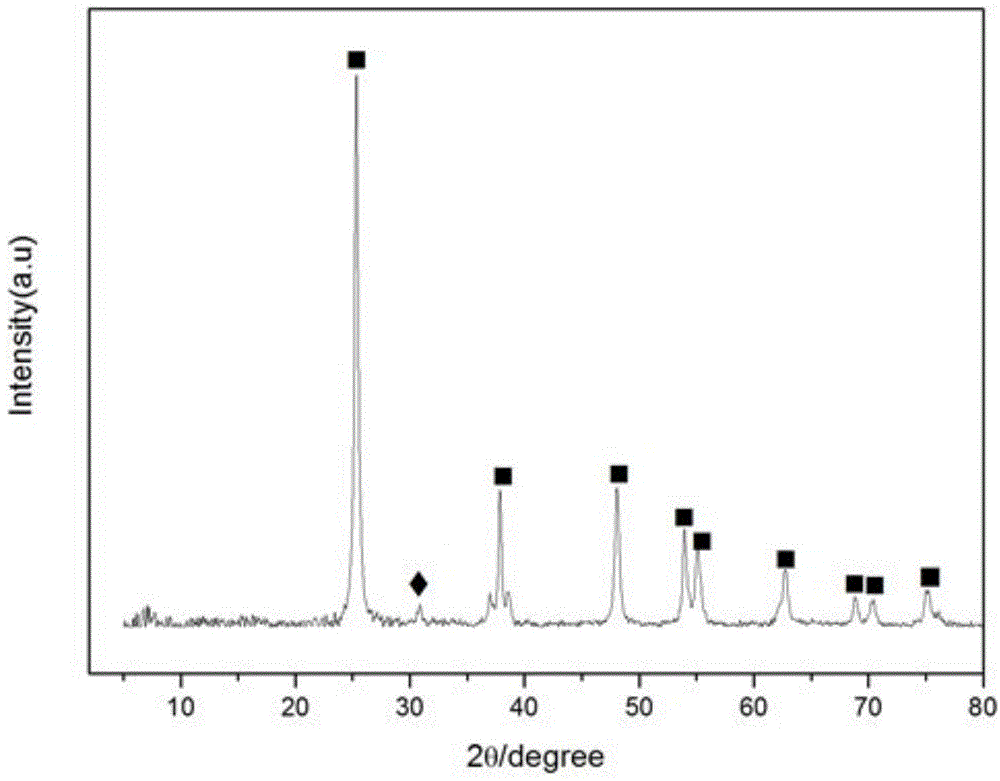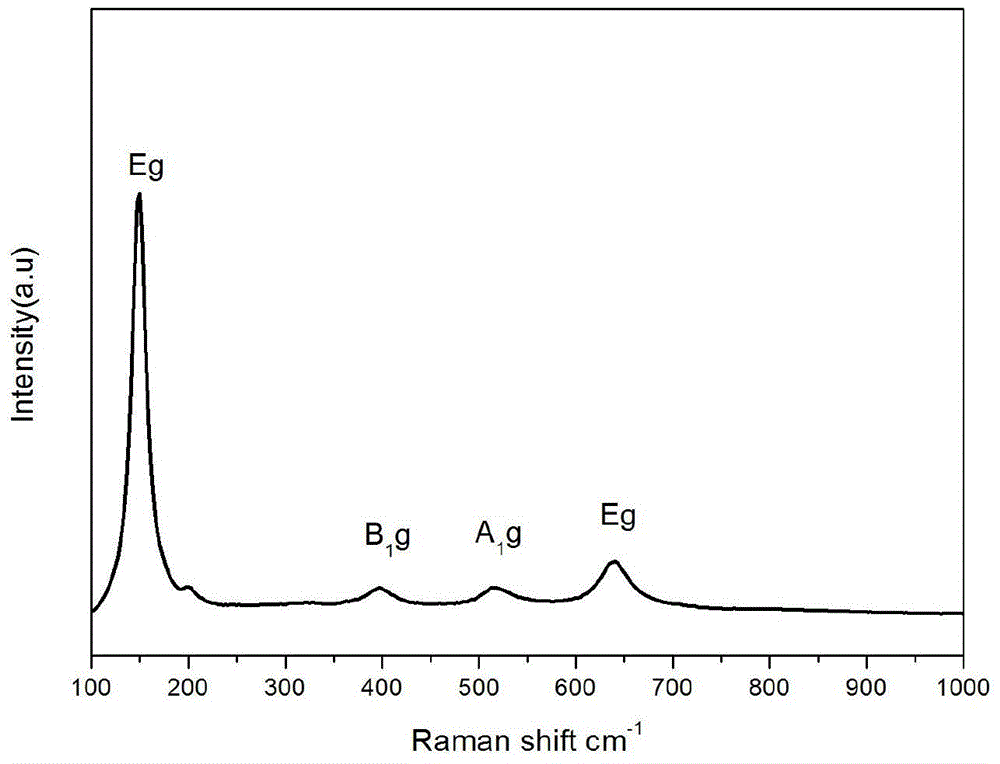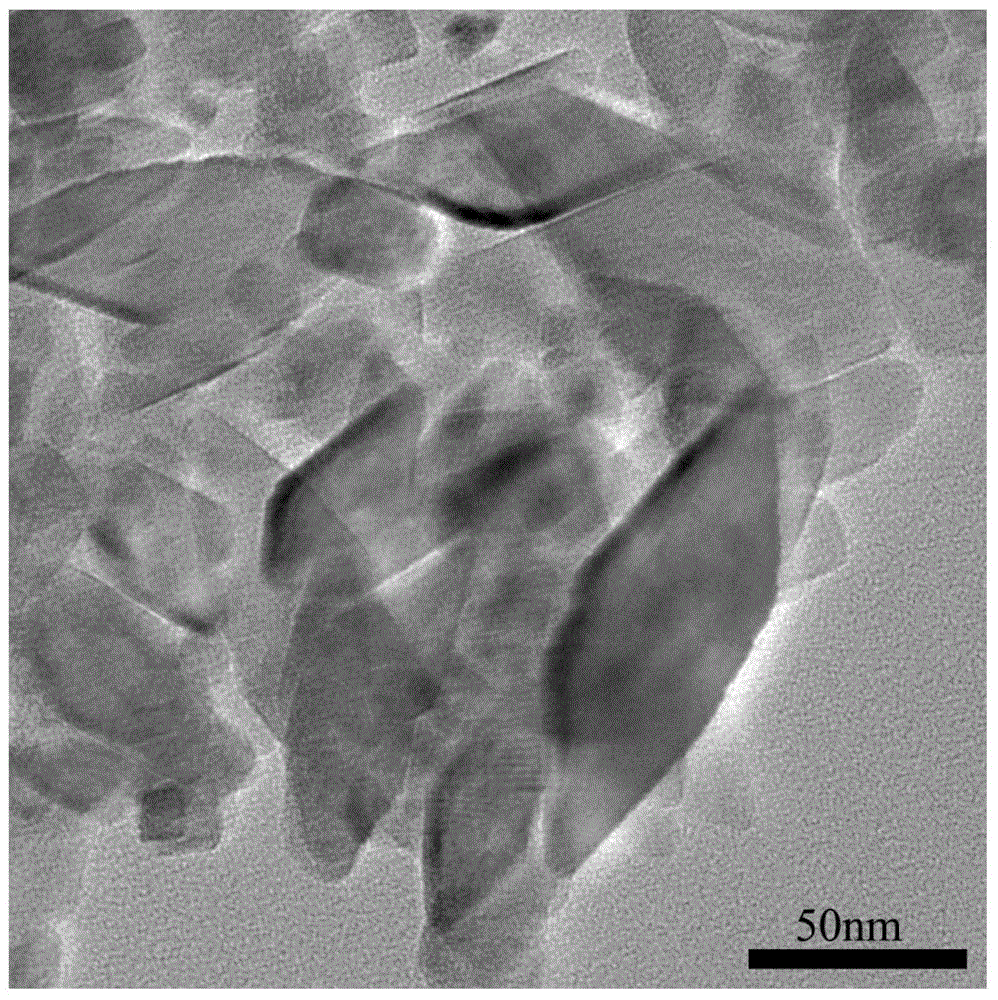Method for synthesizing anatase/brookite nano composite material for photocatalytic decomposition of water into hydrogen through one-step hydrothermal method
A nanocomposite material, a technology of photo-splitting water for hydrogen production, applied in nanotechnology for materials and surface science, hydrogen production, nanotechnology, etc., can solve the problem of high probability of photogenerated carrier recombination and few surface active sites , poor photocatalytic activity, etc., to achieve the effects of accelerating electron transfer, cheap raw materials, and simple operation
- Summary
- Abstract
- Description
- Claims
- Application Information
AI Technical Summary
Problems solved by technology
Method used
Image
Examples
specific Embodiment approach 1
[0020] Embodiment 1: A method for synthesizing anatase / brookite nanocomposite materials for photolysis of water to produce hydrogen by a one-step hydrothermal method in this embodiment, specifically operates according to the following steps:
[0021] 1. Add the alkali solution and the titanium source to the water solvent under stirring conditions, and continue stirring for 30 minutes to obtain the precursor;
[0022] Among them, the mass volume ratio of titanium source and water solvent is 1g:(15-30)mL, and the volume ratio of alkali and titanium source is 1:(0.4-3.4);
[0023] 2. Transfer the precursor obtained in step 1 to a hydrothermal kettle, and place it in a blast drying oven for hydrothermal reaction at a temperature of 120-160°C and a reaction time of 10-24 hours;
[0024] 3. Wash the product after the hydrothermal reaction in step 2, and then ultrasonically disperse it in absolute ethanol; repeatedly wash and ultrasonically disperse 2 times to obtain the product; whe...
specific Embodiment approach 2
[0028] Specific embodiment 2: The difference between this embodiment and specific embodiment 1 is that the feature described in step 1 is that the alkali is a mixed solution of one or more of hydrazine hydrate, ammonia water, cyanamide or hydroxylamine. Others are the same as in the first embodiment.
specific Embodiment approach 3
[0029] Specific embodiment three: the difference between this embodiment and specific embodiment one or two is: the source of titanium in step one is or titanium oxysulfate, tetrabutyl titanate, titanium tetrachloride, titanium isopropoxide, titanium sulfide, One or more mixtures of titanium tetrafluoride mixed in any ratio. Others are the same as in the first or second embodiment.
PUM
| Property | Measurement | Unit |
|---|---|---|
| specific surface area | aaaaa | aaaaa |
Abstract
Description
Claims
Application Information
 Login to View More
Login to View More - R&D
- Intellectual Property
- Life Sciences
- Materials
- Tech Scout
- Unparalleled Data Quality
- Higher Quality Content
- 60% Fewer Hallucinations
Browse by: Latest US Patents, China's latest patents, Technical Efficacy Thesaurus, Application Domain, Technology Topic, Popular Technical Reports.
© 2025 PatSnap. All rights reserved.Legal|Privacy policy|Modern Slavery Act Transparency Statement|Sitemap|About US| Contact US: help@patsnap.com



